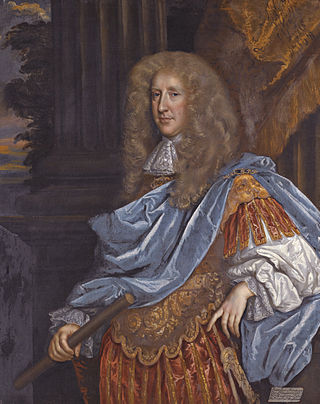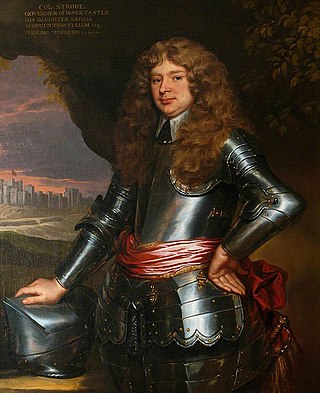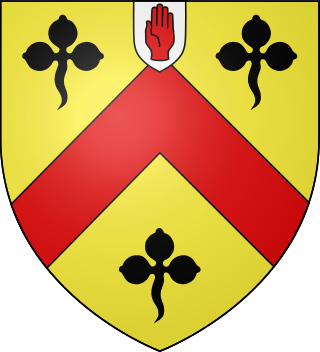
Robert Bruce, 1st Earl of Ailesburyand 2nd Earl of Elgin, PC, FRS, was a Scottish politician who sat in the House of Commons from 1660 to 1663, when he inherited his father's title as Earl of Elgin.
Sir Henry Puckering, 3rd Baronet was an English royalist and politician.

The Hannay Baronetcy, of Mochrum in the Stewardry of Kirkcudbright, was a title in the Baronetage of Nova Scotia. It was created on 31 March 1630 for Robert Hannay. The title became dormant on the death of the second Baronet in 1689. The title was claimed in 1783 by Samuel Hannay, the third Baronet. He sat as Member of Parliament for Camelford. His son, the fourth Baronet, was in the service of the Emperor of Austria. He was unmarried and the baronetcy again became dormant on his death in 1842.

Sir Nicholas Slanning, 1st Baronet FRS of Maristow in the parish of Tamerton Foliot, Devon, was an English courtier and politician who sat in the House of Commons between 1667 and 1689.
Sir Henry Wright, 1st Baronet was a member of parliament for Harwich in the parliaments of 1660 and 1661.
Edward Eliot was an English politician who sat in the House of Commons between 1660 and 1679.

Sir William Strode of Newnham, Plympton St Mary, Devon, was a member of the Devonshire gentry and twice served as MP for his family's pocket borough of Plympton Erle, in 1660 and 1661–1676.
Sir Charles Hussey was an English politician who sat in the House of Commons in two periods between 1656 and 1664.
Sir William Bassett was an English landowner and politician who sat in the House of Commons between 1669 and 1693.
Sir John Austen, 2nd Baronet was an English landowner and politician who sat in the House of Commons at various times between 1667 and 1699.
Sir Thomas Higgons was an English diplomat and politician who sat in the House of Commons at various times between 1659 and 1687.
Sir Richard Braham, 1st Baronet was an English politician who sat in the House of Commons from 1661 to 1676.
Thomas Southcote MP DL JPof Buckland was an English landowner and politician who sat in the House of Commons from 1661 to 1664.

Sir John Strode of Parnham, Dorset supported the Royalist cause in the English Civil War. He held various official offices during the Protectorate and was knighted by Oliver Cromwell. After the Restoration he was a member of the Cavalier Parliament. He was knighted by King Charles II in 1662.

Sir Richard Wiseman (1632–1712) of Torrell's Hall, Willingale, Essex was an English landowner and politician who sat in the House of Commons from 1661 to 1679.
Sir Thomas Hewett, 1st Baronet was an English landowner of the Civil War period, who briefly sat in Parliament for Windsor. He made his home at Pishiobury, which he bought in 1635.

Indio in the parish of Bovey Tracey in Devon, is an historic estate. The present large mansion house, known as Indio House is a grade II listed building rebuilt in 1850, situated about 1/2 mile south of Bovey Tracey Church, on the opposite side of the River Bovey. According to the Devon historian Pole (d.1635) it was originally a priory, however research from 1840 onwards has suggested it was more likely merely a grange farm, a possession of St John’s Hospital, Bridgwater, Somerset, from 1216.

Harewood House was an ancient manor house, built originally by the Saxons, in Cornwall, England. Harewood Estate is surrounded by old mine workings, so the house faces towards Morwellham Quay.

Southcott is a surname of an ancient and prominent family from the English counties of Devon and Cornwall.

The Abdy baronetcy, of Felix Hall, in the County of Essex, was created in the Baronetage of England on 14 July 1641 for Thomas Abdy who was High Sheriff of Essex. The title became extinct in 1868.










